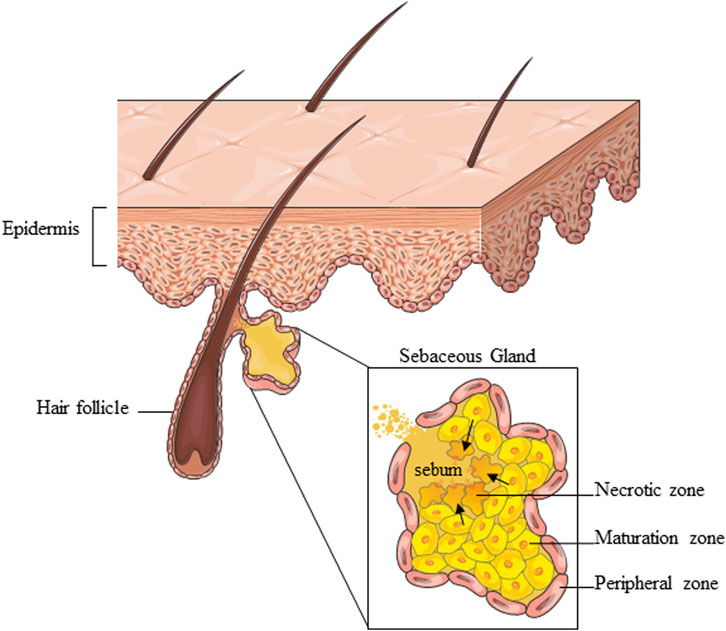Human disease-associated researches are always stalled by the lack of disease samples or improper research materials and sped up by the advent of human iPSC and gene editing technologies. Creative Biolabs, with years of experience in iPSC fields, has established several trustable models to mock the disease development and generates vivid cell models to facilitate disease discovery, especially in the area of acne and hyper/hyposeborrhea.
As one of the most common diseases globally, acne influenced nearly ~0.6 billion people in 2015. Acne is caused by dead skin cell- and secreted oil-induced hair follicle clog, with typical pathogenetic factors like increasing sebum production and perifollicular inflammation. Excessive or decreasing sebum production, caused by hyperactivity or hypoactivity of the sebaceous glands, leads to hyperseborrhea with oily skin and hair or hyposeborrhea showing dry skin and breakable hair, respectively. The former is a trigger of acne and is also associated with a large number of tumors on the face. Sebum is composed of squalene, triglycerides, free fatty acids, and wax esters, and is secreted by the main components of sebaceous glands called sebocytes. Sebum imbalance is a common symptom of acne and hyper/hyposeborrhea and is influenced by different endogenous and exogenous factors.
 Fig.1 The sebaceous gland comprises layered sebocytes following different maturation stages.1
Fig.1 The sebaceous gland comprises layered sebocytes following different maturation stages.1
To speed up the research of acne and hyper/hyposeborrhea, Creative Biolabs generates different models based on iPSC derivates such as sebocytes. Human iPSC-derived sebocytes, specialized in sebum production, share similar morphology and marker expression with primary sebocytes, which can be affected by hormones while producing hormones. Sebocytes are an ideal tool for hyper/hyposeborrhea research.
Besides, human iPSC-derived skin organoids containing sebaceous gland appendages are another good cell model for acne and hyper/hyposeborrhea research.
Furthermore, our outstanding CRISPR tech can introduce client-interested mutations to iPSC and provide custom disease models to facilitate your disease research and drug discovery.
With our advancing cell models, different kinds of assays to detect acne and hyper/hyposeborrhea- associated endogenous and exogenous clues can be applied to facilitate your disease research. They include
Besides the assays mentioned above, Creative Biolabs also provides custom assays to advance your disease research and drug discovery. For all the questions about your acne and hyper/hyposeborrhea-associated projects, please feel free to contact us for more details.
Reference
For Research Use Only. Not For Clinical Use.